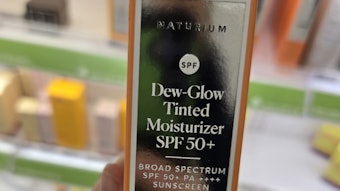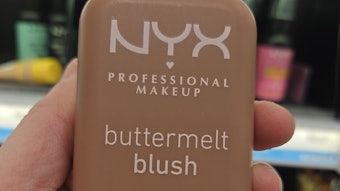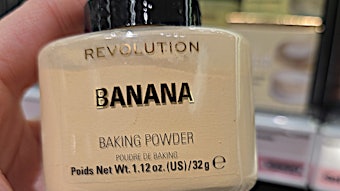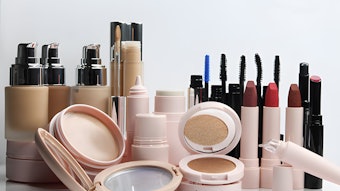
The variety of nail polish forms and effects available to consumers today depends on the wide range of technologies provided to nail polish formulators. Current trends include nail polish strips, gel nails for application in salons and at home—which will be covered in a future article, color-changing nail polish, textured nails, water-based nail polish and others. An earlier article written by this author1 reviewed nail polish from both a functional standpoint, i.e., as a decorative coating for nails, and from a formulation standpoint, describing the technical requirements for achieving desired decorative effects and performance. In relation, this article will discuss some of the new trends in nail polishes and their underlying technologies.
Nail Polish Strips
Many women consider nail polish a part of their makeup routine. In some cases, it may function in their overall look; in others, it may make a bold fashion statement. In either case, one of the biggest trends has been to use nail polish strips. These can range from simple shades of color, to strips having decorative patterns and/or effect pigments including irregular glitter particles or other regularly shaped particles. One only has to search the Internet for the term nail polish strips to see the varieties available; Figure 1 an example of nail polish strips.
One can buy either nail polish stickers or nail polish strips. Nail polish stickers are usually made of flexible plastic such as vinyl with an adhesive base. Nail polish strips essentially are nail polish that has been applied to an adhesive layer with a removable backing and partially or completely dried and die-cut. A number of U.S. patents provide significant detail on the different ways this can be achieved.2–6 For example, more than one layer of polish can be applied to previously dried layers to achieve looks such as a French manicure.4, 5 In addition, decorative patterns can be printed on the polish, or glitter effect pigments and metallic foils can be applied.6 Some recent nail strip variations recommend using a topcoat or combining the nail strips with a gel topcoat to provide better wear. One company combines base coat, color coat and topcoat into one strip.7 Examples of new technologies and raw materials employed in the manufacturing of nail strips are discussed below.
Nitrocellulose: Early examples of nail strips used traditional nail polish formulations. More recently, stronger, more stretchable and flexible strips have been achieved using higher levels of high molecular weight nitrocellulose in the coating solution than are used in liquid nail polish.5 These higher levels contribute to the ability of the films to stretch,5 and they dry to a stronger, more flexible film due to the longer chain size of the polymer molecules. The higher viscosities of these formulations require different application methods. Specifically, the nail polish must be heated to 100–150°F before applying it by extrusion to the adhesive substrate.5 The films are then partially dried using an infrared heater or hot air blower to allow for easy application of the strip to the nail. Once the consumer applies them, the remaining solvent evaporates, leaving a stronger film on the nails; this is why the nail product packaging states: “Open, unused strips should be discarded.”
UV-curable: Instead of nitrocellulose-based strips, UV curable formulas can be used for both the adhesive and decorative layers.6 These formulations can contain monomers such as methyl methacrylate, butyl methacrylate and butyl acrylate that undergo free radical polymerization when photo-initiators absorb UV light and generate free radicals. Oligomers with acrylate and methacrylate functionality on each end of the molecule are added to provide flexibility. Strength is provided by incorporating multifunctional monomers such as trimethylolpropane triacrylate, which provide three-dimensional cross-linking. These formulations must balance the level of each polymerizable component so that it is neither too flexible and soft, nor too hard and brittle; they may be partially cured before application to make them easier to handle.
Color-change Effects
Color-changing nail polish can be based either on thermochromism, i.e., temperature activation, or photochromism, i.e., light activation. In either case, an outside stimulus initiates the color change. Eyeglasses with darkening lensesa are an example of photochromism; they darken in sunlight and lighten when moved indoors. A good example of thermochromism is the “mood ring” (see Figure 2).
The basis for these color changes is an organic molecule that can exist in one of two configurations. The chosen molecule must have certain structural features that allows for its conversion from a non-conjugated configuration to a conjugated configuration. Classes of molecules that can exhibit photochromism include: spiropyrans, spirooxazines and diarylethenes. An example of a photochromic molecule is shown in Figure 3; here, in its leuco or colorless form, the spiro bonding prohibits the molecule from exhibiting extended conjugation, which leads to a colored species. When the molecule absorbs UV light, the carbon-oxygen spiro bond breaks, leading to a rearrangement that allows the conjugation to extend across the entire molecule. At this point, the molecule exhibits color when the absorption spectrum shifts to lower energy and into the visible range.
When the UV light is removed, the molecule rearranges back to the leuco or colorless state, which is the more thermodynamically stable of the two configurations. Since the rearrangement is temperature-dependent, it will occur faster at higher temperatures. Commercial examples of photochromic nail polish are available from Ruby Wing8 and Del Sol.9 SunChangeNails is another product10 that goes on clear and changes color when exposed to sunlight. It can also be used as a topcoat over regular nail polish to give combined effects outdoors.
Thermochromism can be achieved using liquid crystals or leuco dyes. Some liquid crystals are capable of displaying different colors at different temperatures. This change is dependent on the selective reflection of certain wavelengths by the crystalline structure of the material as it changes from the low-temperature crystalline phase, through the anisotropic chiral or twisted nematic phase, to the high-temperature isotropic liquid phase. Only the nematic mesophase has thermochromic properties; this restricts the effective temperature range of the material. Liquid crystals are used in the form of microcapsules to protect them and maintain their thermochromic properties. A good example of the application of color-changing liquid crystals is a thermometer strip applied to the forehead.
Leuco dyes are also used in microcapsules but for a different reason: the capsules contain the dyes in a solvent with a relatively low melting point along with an organic acid and, in some cases, an acid activator. When the temperature is below the melting point of the solvent, the dye, acid and activator (if necessary) are in close proximity, allowing for electronic interaction, i.e., hydrogen donation, between the molecules and leading to the rearrangement that produces the colored state of the dye. As the solvent melts with increasing temperature, the molecules separate and there is no interaction, leading to the colorless state. An example of the use of leuco dyes is in packaging that changes color upon cooling, such as a beer label that changes color to show it is chilled to the proper drinking temperature.
For nails, the system must be designed so that this transition temperature is close to a temperature that nails would be exposed to, including changes in body temperature. The basic schematic of thermochromic transition is shown in Figure 4. Also, since temperature change may not occur constantly or consistently across the nail, different effects will appear as the color changes—spots, gradations, etc. This is one of the features that make thermochromic nail polish so interesting.
A specific example is the change in color of crystal violet lactone when exposed to acidic conditions (see Figure 5). The lactone, in its pure state, is slightly yellow. When dissolved in a slightly polar or non-polar organic solvent and exposed to acidic conditions; however, the lactone ring opens and the oxygen detaches from the central carbon atom. The central carbon then becomes a resonance stabilized carbocation, inteconnecting the π systems of the aromatic rings and the amino functional groups, in turn creating a single large conjugated system with strong absorption in the visible range.
Some commercial examples of thermochromic nail polish are available from The Mood Polish11 and Orly;12 Orly’s topcoat is designed for use with gel nails to hide or reveal their underlying color, depending on the temperature (see Figure 6).
Textured Polish
Beyond strips and color-change, textured nail polish have become popular. Textures can range from satin to matte, and from granular sand13 and caviar,14 to “fuzzy”15 and velvety.16 All of these textured polishes contain particulate materials of different types. Satin and matte finish nail polishes and matte topcoats often contain silica, which is also used to give satin and matte finishes to wood. The degree of satin or matte finish is determined by the amount of silica used.
Polyethylene terephthalate fibers are used to give a three-dimensional woven fiber effect to nails. Sally Hansen Fuzzy Nails uses silica to provide gel structure to the formulation and keep the fibers suspended. Velvet-textured nail polishes come with colored powders to be sprinkled on wet nails for a velvety finish, once dry. The velvet effect can also be achieved by using larger-sized silica particles than those used for satin or matte finishes.
Caviar nail finishes are achieved by applying microbeads made of glass or plastic to set—but not yet dry—nail polish by pouring the beads over the nail or touching the nail into a small container of the microbeads. After the polish is dry, a topcoat is applied to seal the beads to the nail. Different effects can be achieved depending on the shade of nail enamel and the color and size of the microbeads. An example of a caviar nail finish is shown in Figure 7.
Magnetic Polish
Magnetic nail polishes are formulated with different colored particles that orient themselves when a magnetic field is applied to the wet nail polish, providing a contrasting pattern. The magnetic particles can be made of any material that responds to a magnetic field, including nickel, cobalt, iron and rare earth metals such as gadolinium, terbium, dysprosium and erbium.17 The metals can be employed in any state with magnetic susceptibility, including as an alloy or an oxide.18 The most preferred metal used appears to be magnetite, i.e., Fe3O4 or iron (II, III) oxide.19 It is readily available and its use is already established in makeup and nail enamel.
Also, the particles used are preferably non-symmetrical, i.e., oblong, so that when exposed to magnetic fields, the alignment of their non-symmetrical shape creates patterns that are visible due to their contrasting color. The magnets provided with the polish upon purchase may consist of several in parallel or other shapes, to create stripes or other patterns in the nail polish. Examples of magnetic nail polish are shown in Figure 8 and Figure 9;the latter of which demonstrates how application of the magnetic field to wet nail polish creates a pattern. These figures also show that different colors and effects can be incorporated into the polishes.
Crackle Effects
Normally, when a top coat is applied to nail polish, it spreads out and dries to a smooth finish. This is because the top coat contains many of the same ingredients that are in the nail enamel—particularly the solvents, which control the rate of drying. Crackle nails are based on the principal of rapid, uneven drying, which is achieved by adding ethyl alcohol to the formulation.
When a crackle top coat is applied to nails, the ethyl alcohol begins to evaporate quickly, leading to changes in the surface tension and viscosity of the crackle coat. These changes cause the crackle coat to pull away from areas that are drying faster than others. This can occur from the outside edge in, or from any area in the film where the evaporation rate is faster. Once the top coat begins to separate, its rate of separation increases, leading to a crackled finish.
This effect is most noticeable when the color coat beneath and top crackle coat are distinctly different colors; i.e., black and white, silver and black, neon and standard colors, etc. The effect also depends on the thickness of the crackle coat; thinner films will lead to thinner cracks, while a thicker film will lead to thicker, more visible cracks. An example of a crackle finish is shown in Figure 10.
Breathable Technologies
One new nail technology unrelated to appearance is breathable nail polish.20 Developed by Wojciech Inglot, it allows water and oxygen to pass through the film, providing a potentially healthier alternative to standard nail polish. This was achieved using a resin similar to that used in contact lenses, which must allow oxygen to permeate through the lens to the eye.
One of the most interesting responses to this polish has been from the Muslim community.21 For observant Muslim women, wearing nail polish has been a challenge due to the practice of wudu–washing the body in preparation for prayer. To be performed fully, water must properly cleanse all parts of the body, including the nails, which means the barrier created by the nail polish is generally prohibited. If a Muslim woman is wearing conventional nail polish, she must remove it before she can perform wudu—but news of the new polish spread quickly among the Muslim community.
Questions about whether or not the polish could be worn when performing wudu arose, thus a Muslim cleric, Shaykh Mustafa Umar, tested the product for water permeability at the Islamic Institute of Orange County, finding it acceptable.22
Another company, Tuesday in Love, developed its version of a water-permeable nail polish that is based on a micro-pore technology.23 An added benefit of this technology is the ability to peel the film from the nail on one piece, once it is dry.24
Conclusion
The number of nail polish effects and finishes available to today’s consumers has never been more varied. Almost any desired effect can be achieved through the different polishes, finishes and their combinations, to allow the wearer to express their individuality. While it may seem that traditional nail polish formulas have not changed, advances such as those described including novel colors, textures and the new breathable nail polishes show that innovation is in motion. Who knows what will be possible in the next five to ten years?
References
All websites accessed Nov. 27, 2013.
- FC Pagano, Nail polish: The industrial cosmetic, Cosm & Toil 126(5) 372-380 (2011)
- US Pat 4,903,840, Self adhesive nail coatings, DS So, assigned to Hwo Young Park (Feb 7, 1990)
- US Pat 5,415,903, Self-adhesive laminate for toe and fingernails, H-R Hoffman, R von Kleinsorgen, G Simon and D Steinborn, assigned to LTS Lohmann Therapie-Systeme GmbH and Co KG (May 16, 1995)
- US Pat 8,061,363, Method and product for attaining a French manicure using a dry nail polish applique, FY Park, assigned to Park Global Holdings LLC (Nov 22, 2011)
- US Pat 8,092,786, Dry nail polish applique and method of manufacturing same, FY Park, assigned to Park Global Holdings LLC (Jan 10, 2012)
- US Pat App 20130220355, Metallic foil nail appliques, FY Park (Aug 29, 2013)
- www.incoco.com/how-to-apply
- http://rubywing.com/color-changing-nail-polish/fall-nail-colors
- www.delsol.com/womens/nail-polish.html
- http://sunchangenails.com/
- https://themoodpolish.com/
- www.orlybeauty.com/gelfx-shade-shifter.html
- www.loveliquidsand.com
- www.ciate.co.uk/nails/wow-kits-1/caviar
- https://www.sallyhansen.com/products/nails/nail-color/fuzzy-coat
- www.ciate.co.uk/nails/wow-kits-1/velvet
- www.chemicalnovelty.com/2012/01/chemistry-of-magnetic-nail-polish.html
- Ibid Ref 16
- Ibid Ref 16
- www.inglotusa.com/Nail_Enamel-O2M_Nail_Enamel.html
- www.usatoday.com/story/news/world/2013/02/27/breathable-nail-polish-muslims/1951627
- https://mustafaumar.com/2012/11/is-breathable-nail-polish-sufficient-for-wu%E1%B8%8Du/
- www.tuesdayinlove.com/how-it-works
- Ibid Ref 23










